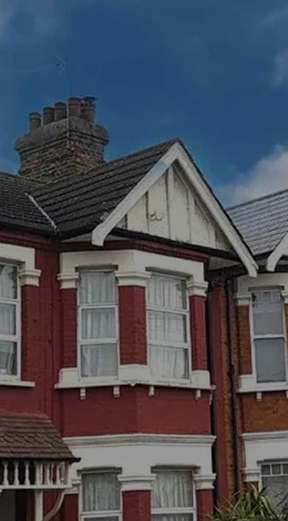Under what law can breach of building regulations claims be brought?
Section 38 Building Act 1984: Believe it or not since 1984 Section 38 of The Building Safety Act has never come into force! The Building Safety Act 2022 will bring Section 38 into force and provide for claims for up to 15 years after works have been completed. Section 38 provides that a breach of building regulations which causes ‘damage’ is actionable, unless the building regulations provide otherwise. This section applies to "all buildings not just dwellings" and may be helpful for residents or owners of buildings with fire safety defects, as those defects are often breaches of building regulations. The Building Safety Act 2022 does not provide the same 30 year retroactive period.
Defective Premises Act 1972: The Defective Premises Act 1972 only covers “dwellings” which for residential blocks means that the apartments themselves are covered, but the common parts are not. The Building Safety Bill will, however, introduce a new provision into the Defective Premises Act 1972 extending the remit of the Defective Premises Act to include the common parts and exteriors: ‘any part of a building consisting of or containing one or more dwellings’ .
The extended limitation periods that the Building Safety Act 2022 inserted into the Defective Premises Act 1972 and section 38 of the Building Act 1984 will, once the Building Safety Act commences offer a new lifeline to beleaguered residents and building owners. Residents, building owners and their advisors should check to see when apartments/buildings were practically completed. If it was less than 15 years ago, then otherwise time barred claims may become actionable as soon as July 2022 or thereabouts as the Building Safety Act extends limitation periods to either 15 or 30 years.
Latent Damage Act only applies to negligence cases not defects 3+ years after discovery
Breach of Contract: such claims only apply to original buyers who bought direct from the developer. The crux of an original owners breach of contract claim is that a building was not converted to a good standard. Documents to be used as proof might include Building Regulations, Drawings, Good workmanship or Best Practice Methodologies, Good Design and where a building falls short could constitute a Breach of contract. The opportunity to make a claims expires 6 years after the date of performance of the contract unless contract made under deed in which 12 years is the timescale. Whilst lease may be a deed, it may not contain the contract clauses to carry out works to a good standard - hence this limits the claim to original 1st purchasers from the developer as a party to the original developer sale contract.
Latent Damage Act 1986: such claims only apply to negligence cases not defects and time out 3 years after discovery
Negligent Professional Advice: claims for negligence may arise from omissions or wrong diagnosis in a Building Survey or a Homebuyers Survey. Claims time out 3 years from the date that the defects came to light.
Negligence claims arise because whenever you provide advice or services in a professional capacity, you’re entering into something called the duty of care. The duty of care assumes that both parties will behave professionally and deliver advice or services up to industry standards. However, if you fail to perform to these standards and your client suffers harm as a result of your actions—or inaction—you are culpable of professional negligence. Professional negligence can take many forms, including (but not limited to): Accountant negligence (e.g. an accountant gives poor financial advice that leads to loss), Legal negligence (e.g. a lawyer who doesn’t prepare adequately and fails to provide legal advice up to reasonable standards), Architectural negligence (e.g. an architect designs a building but fails to consider all government regulations). What you will have to prove is (1) Duty of care – You entered into a contract in which you were owed a duty of care. As evidenced in the Donoghue v. Stevenson case study, this does not always have to be a written agreement. (2) Breach of duty of care – The professional who advised you did not do so to the best of their ability and did not meet the standards that one would expect from a professional in their position. (3) Loss suffered – You have demonstrably suffered loss as a result of their negligence. If you suffered no loss, your claim would not usually succeed—even if the professional was negligent.
Consumer Rights Act 2015: The Consumer Rights Act aims to protect consumers against poor-quality products and unfair business practices or contract terms with regards to transactions, repairs, refunds and delivery. A consumer is defined as “an individual acting for purposes that are wholly or mainly outside that individual's trade, business, craft or profession”. The Consumer Rights Act 2015 offers eight rights are: The right to satisfaction of basic needs – to have access to basic, essential goods and services such as adequate food, clothing, shelter, health care, education, public utilities, water and sanitation. The act says goods must last a reasonable time - and that can be anything up to 6years from the date of purchase.
Social
Valuation Services provided by Ringley's Valuation Team
Block Management Packages
Legal Services provided by Ringley Law
Building Surveying Services
Meet our Expert Property Commentators
Under what law can breach of building regulations claims be brought?
Section 38 Building Act 1984: Believe it or not since 1984 Section 38 of The Building Safety Act has never come into force! The Building Safety Act 2022 will bring Section 38 into force and provide for claims for up to 15 years after works have been completed. Section 38 provides that a breach of building regulations which causes ‘damage’ is actionable, unless the building regulations provide otherwise. This section applies to "all buildings not just dwellings" and may be helpful for residents or owners of buildings with fire safety defects, as those defects are often breaches of building regulations. The Building Safety Act 2022 does not provide the same 30 year retroactive period.
Defective Premises Act 1972: The Defective Premises Act 1972 only covers “dwellings” which for residential blocks means that the apartments themselves are covered, but the common parts are not. The Building Safety Bill will, however, introduce a new provision into the Defective Premises Act 1972 extending the remit of the Defective Premises Act to include the common parts and exteriors: ‘any part of a building consisting of or containing one or more dwellings’ .
The extended limitation periods that the Building Safety Act 2022 inserted into the Defective Premises Act 1972 and section 38 of the Building Act 1984 will, once the Building Safety Act commences offer a new lifeline to beleaguered residents and building owners. Residents, building owners and their advisors should check to see when apartments/buildings were practically completed. If it was less than 15 years ago, then otherwise time barred claims may become actionable as soon as July 2022 or thereabouts as the Building Safety Act extends limitation periods to either 15 or 30 years.
Latent Damage Act only applies to negligence cases not defects 3+ years after discovery
Breach of Contract: such claims only apply to original buyers who bought direct from the developer. The crux of an original owners breach of contract claim is that a building was not converted to a good standard. Documents to be used as proof might include Building Regulations, Drawings, Good workmanship or Best Practice Methodologies, Good Design and where a building falls short could constitute a Breach of contract. The opportunity to make a claims expires 6 years after the date of performance of the contract unless contract made under deed in which 12 years is the timescale. Whilst lease may be a deed, it may not contain the contract clauses to carry out works to a good standard - hence this limits the claim to original 1st purchasers from the developer as a party to the original developer sale contract.
Latent Damage Act 1986: such claims only apply to negligence cases not defects and time out 3 years after discovery
Negligent Professional Advice: claims for negligence may arise from omissions or wrong diagnosis in a Building Survey or a Homebuyers Survey. Claims time out 3 years from the date that the defects came to light.
Negligence claims arise because whenever you provide advice or services in a professional capacity, you’re entering into something called the duty of care. The duty of care assumes that both parties will behave professionally and deliver advice or services up to industry standards. However, if you fail to perform to these standards and your client suffers harm as a result of your actions—or inaction—you are culpable of professional negligence. Professional negligence can take many forms, including (but not limited to): Accountant negligence (e.g. an accountant gives poor financial advice that leads to loss), Legal negligence (e.g. a lawyer who doesn’t prepare adequately and fails to provide legal advice up to reasonable standards), Architectural negligence (e.g. an architect designs a building but fails to consider all government regulations). What you will have to prove is (1) Duty of care – You entered into a contract in which you were owed a duty of care. As evidenced in the Donoghue v. Stevenson case study, this does not always have to be a written agreement. (2) Breach of duty of care – The professional who advised you did not do so to the best of their ability and did not meet the standards that one would expect from a professional in their position. (3) Loss suffered – You have demonstrably suffered loss as a result of their negligence. If you suffered no loss, your claim would not usually succeed—even if the professional was negligent.
Consumer Rights Act 2015: The Consumer Rights Act aims to protect consumers against poor-quality products and unfair business practices or contract terms with regards to transactions, repairs, refunds and delivery. A consumer is defined as “an individual acting for purposes that are wholly or mainly outside that individual's trade, business, craft or profession”. The Consumer Rights Act 2015 offers eight rights are: The right to satisfaction of basic needs – to have access to basic, essential goods and services such as adequate food, clothing, shelter, health care, education, public utilities, water and sanitation. The act says goods must last a reasonable time - and that can be anything up to 6years from the date of purchase.
Valuation Services provided by The Ringley Group
Meet our Expert Property Commentators























































